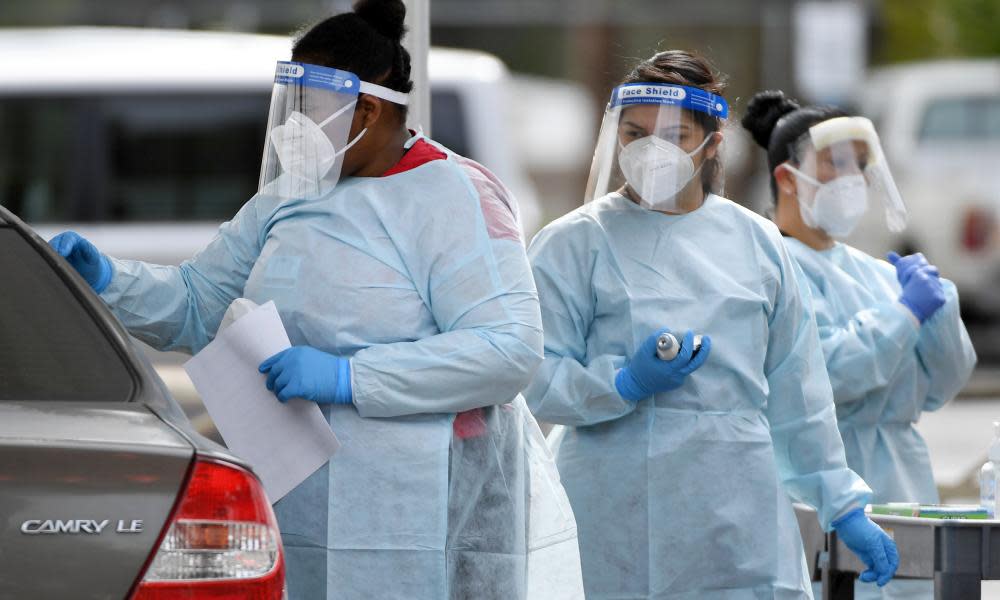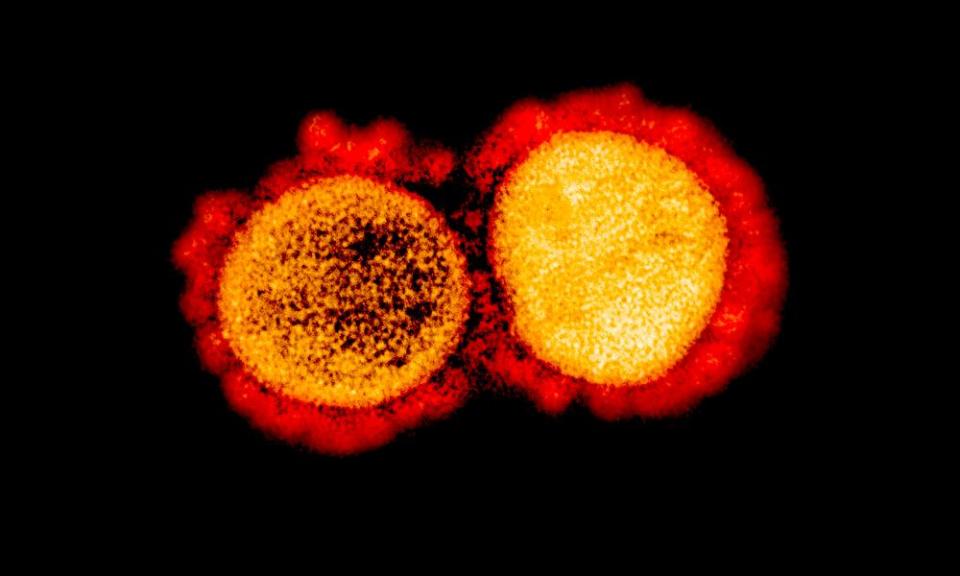US reinfection case raises question: how long does Covid immunity last?

A man in Nevada was infected with Covid-19 in March. He recovered and then tested negative for Covid-19. His would have been an unremarkable story amid a pandemic that has infected millions of people in America – if he had not been infected again less than six weeks later.
The 25-year-old male from the American south-west became what appears to be only the second published case of Covid-19 reinfection in the scientific literature, alongside a case of reinfection in Hong Kong.
The man, a long-term care home worker in Reno, quarantined at a family member’s home while he was ill. Researchers believe he was reinfected when a family member, also an essential worker, brought a slightly different coronavirus strain home in early June.
“We had an outbreak occur in a long-term care facility, and they were in a position that does work with patients,” said Heather Kerwin, the epidemiology program manager for Washoe county, Nevada, who worked directly with the case.
The man had to be hospitalized on his second bout with Covid-19, but eventually recovered. He is still suffering side-effects. “They are kind of experiencing some of the lingering effects of fatigue and brain fog,” said Kerwin.
Virologists largely expected reinfection could occur. But experts said the US reinfection case highlights the enduring mysteries of the coronavirus, including how long a person’s immune system protects against the virus after an infection and the virus’s interaction with individual biology. Reinfection cases are important also for the development of vaccines and assessing their impacts as the world’s medical community races to develop them.
“If we don’t get reasonably long duration of protection to natural infection, then we probably will not get that from a vaccine,” said Dr Arnold Monto, a professor of epidemiology and public health at the University of Michigan school of public health. “Most of our vaccines do not do better than natural infection in terms of protection.”

Two cases alone cannot solve these mysteries. Experts said scientists will need population-level studies to begin to untangle that question. These case studies represent the very beginning of that work.
“Whether there’s immune control of the virus is a critical question and these cases are going to allow us to figure it out,” said Dr Rajesh T Gandhi, an infectious diseases specialist at Massachusetts general hospital, a professor of medicine at Harvard Medical School and the chair of the HIV Medicine Association.
More broadly, the Nevada case also reveals the power that can be brought to bear by robust testing, contact tracing and public health expertise at a time when all three are under attack. Public labs and contact tracing programs have had funding decimated in the decade since the Great Recession.
Per-capita funding for state health departments dropped 16% since 2010, according to Kaiser Health News. Many are now beleaguered – overburdened by Covid-19 outbreaks and the subjects of suspicion or outright conspiracy theories. Until recently, Kerwin headed a team of just two other epidemiologists (sometimes called “disease detectives”) who had to trace all of Washoe county’s more than 8,000 cases.
“We are spending upwards of 10, 12, 14 hours a day, four to six days a week, because we are running a seven-day operation,” said Kerwin.
Washoe county epidemiologists, the Nevada public health lab and university scientists went to great lengths to confirm the case in Nevada, and even ran a “paternity test” to ensure samples came from the same person.
“A lab has to take an extremely concerted effort to do more right now,” said Mark Pandori, the director of the Nevada state public health laboratory, and an associate professor of pathology at the University of Nevada, Reno School of Medicine. Pandori was a co-author on the case study.
His lab was alerted to the case by one of Kerwin’s epidemiologists, who was in touch with the patient. When the patient began reporting Covid-like symptoms, again, Kerwin notified the lab.
The lab was able to retest the initial sample because technicians laid out a plan to look for anomalies in the beginning of the pandemic. They had kept more than 100,000 specimens, which filtered in from every corner of Nevada except Las Vegas. Those specimens included those of the 25-year-old from Reno.
When Pandori’s lab found the man was positive for Covid-19, bioinformatics analyst Richard Tillett from the University of Nevada Reno was asked to sequence the genome of both the old and new sample.
“I started with cautious alarm,” said Tillett. He said he “wanted to be absolutely sure this was real, and that this could be found by others and we were not making a mistake”.
Tillett ran the panel a second time, then asked Joel Sevinsky of Theiagen Consulting LLC to validate the result. The scientists had the same findings – same patient, two distinct infections.
Tillett notified Pandori of the results, and Pandori sent a Washoe county sheriff to the man’s house to get a DNA sample so the team could “sort of do paternity testing” to ensure they were not two different people.
“They’re both Covid-19, and they’re both even within the dominant North American strain, but there are snips – mutations that occurred in the first infection that are not mutated in the second infection,” said Tillett. “And the second infection has some of its own characteristic mutations.”
But this too can lead to questions. Did Nevada’s lab find a needle in a haystack, or could many more such cases go unidentified because of fractious public health infrastructure?
Experts said the case helps illustrate the constraints public health workers in the US operate under, and how their work can explore fundamental questions about a little-understood virus.
“Defunding public health nationwide is one of the things I really worry about,” said Mary Pittman, chief executive officer of the Public Health Initiative, which advocates and aids in public health initiatives globally. “It’s one of the things we have to recognize and ameliorate, because this is not going to be our last pandemic.”
The case study of the man’s reinfection was published in the Lancet’s pre-print service, or non-peer-reviewed publication, in late August. The case is now undergoing peer review for further publication. The first case of reinfection was peer-reviewed and published in the journal Clinical Infectious Diseases in August by researchers at the University of Hong Kong.
Like in Hong Kong, researchers in Nevada sequenced the genomes of two samples from the same person, and looked at what was different in the genetic code of the two infections. The findings point to a grab bag of mysteries which have surrounded the coronavirus since nearly the moment it was identified.
How long does natural immunity last? How common is severe illness during the second infection? Does a person’s individual biology play a role in reinfection?
“You really need many, many cases to say – people are going to get sick the second time around,” said Gandhi. “You can’t do it with just a couple of cases because you don’t have enough to sink your teeth into.”
Importantly, the Hong Kong patient, a 33-year-old man, was reinfected but was asymptomatic upon his second infection. In Reno, the 25-year-old man had a worse outcome, was hypoxic and was briefly hospitalized.
The CDC is beginning to run longitudinal studies examining these questions of immunity, said Monto, and so is the University of Michigan, with a 300-household program originally designed to assess influenza vaccines.
“If you have to work this hard to confirm it, to me, it says that it hasn’t happened that often,” he said. “But, and here’s the caveat, we haven’t had very much time since people first got infected to see it.”

